The National Center for Earth and Space Science Education (NCESSE), and Arthur C. Clarke Institute for Space Education, are proud to introduce the National Step 2 Review Board for SSEP Mission 5 to the International Space Station (ISS). On December 3 and 4, 2013, the Board met at the Smithsonian National Air and Space Museum, in Washington, DC, to review 45 finalist proposals for student flight experiments submitted from across the network of 15 communities participating in SSEP Mission 5 to ISS. Listed below are the 17 Board Members—scientists, engineers, and science educators from academia, federal agencies, commercial entities, and national science education non-profits.
For Mission 5 to ISS, a total of 6,750 grade 5-12 students were formally engaged in designing microgravity experiments suitable for flight aboard ISS. At the conclusion of the 9-week experiment design phase, a total of 1,344 proposals were submitted by student teams, and 485 proposals were forwarded for review by SSEP Step 1 Review Boards in the communities. Each of these local Boards selected 3 finalist proposals for submission to the SSEP National Step 2 Review Board.
For Step 2 review, the Board Members were divided into five teams, each comprised of both researchers and science educators, and each team responsible for review of proposals from 3 SSEP communities. Board Members selected 15 flight experiments. The Board Members spent a great deal of time providing thoughtful comments for all 45 proposals, which were forwarded to the proposing student teams by NCESSE. The review went well beyond what is typical of reviews for professional research proposals given the deep recognition that the review process, and the comments back, were critically important teachable moments for the student researchers that worked so hard on their proposals. Through SSEP, we want to immerse students in real science. The review process is very much a part of real science, and that process therefore needs to be transparent, and a learning experience.
NCESSE reviewed all comments from the Step 2 Review Board to assess if there were any outstanding questions that needed to be addressed by the selected student flight teams, and on December 16, 2013, NCESSE formally notified each community of their selected flight experiments.
You are invited to explore the selected flight experiments and honorable mention finalist experiments for Mission 5 to ISS.
A Note to All Mission 5 Student Research Teams
To the thousands of students that participated in SSEP Mission 5 to ISS, regardless of whether your proposal was selected for flight, and regardless of whether it formally went before a Review Board, it is important to recognize the endeavor in which you’ve been engaged – real science. This is how real research proceeds from opportunity, to defining a proposed research program, to submission of a proposal, to formal proposal review and selection. In the professional world, comments back from the Review Board allow a team to rethink and refine their proposed research, so they can submit a better proposal for the next opportunity. We have indeed had SSEP student teams that did not get selected for spaceflight the first time, but did get selected with a refined proposal as part of their community’s next flight opportunity.
Reflect on the overall experience, and recognize that you and your team owned this process – you came up with a microgravity experiment of interest to you, and designed it to fly in a research mini-lab that has a very real set of constraints on its operation. So get excited about what you’ve achieved, and get excited about science, technology, engineering, and mathematics (STEM). We challenge you to seek out new opportunities in STEM where you can be curious and take ownership … in the journey.
Finally, recognize that YOUR COMMUNITY now has an experiment destined for the International Space Station, that you are part of this historic adventure, and now you and your community can rally around your flight experiment and root for its success.
The SSEP National Step 2 Review Board for Mission 5 to ISS—
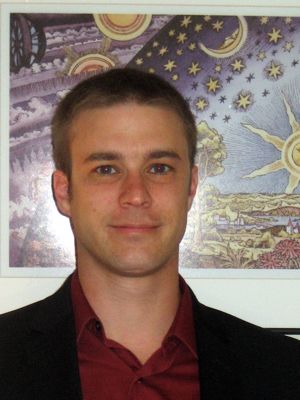 1. Dr. Dan Crooks
1. Dr. Dan Crooks
Postdoctoral Fellow, National Cancer Institute
National Institutes of Health
Dan Crooks is a member of the Urologic Oncology Branch at the NIH Clinical Center, where he is studying metabolic derangements in human kidney cancers, with the goal of identifying novel metabolic pathways that can be targeted by therapeutics. Dan completed a B.A. in Molecular Biology and an M.S. in Environmental Toxicology at the University of California at Santa Cruz, and earned a Ph.D. in Biochemistry from Georgetown University while performing research at the NIH on the molecular mechanisms of cellular iron homeostasis using mammalian red blood cell development and a human mitochondrial muscle disease as model systems. His long-term research interests lie in the pursuit of mechanisms underlying the altered metabolism and tissue specificity of human diseases.
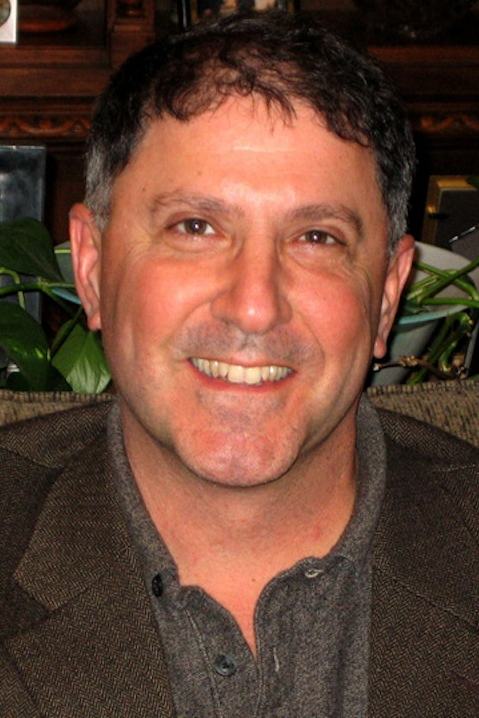 2. Dr. Jonathan D. Dinman
2. Dr. Jonathan D. Dinman
Professor, Department of Cell Biology and Molecular Genetics
Affiliate Professor Department of Chemistry and Biochemistry
University of Maryland College Park
Dr. Dinman employs a naturally occurring molecular mechanism called “programmed ribosomal frameshifting” to understand how cells translate the genetic code with high fidelity, and how this process can be subverted to regulate gene expression. His research impacts a wide range of fields, including development of novel biodefenses against highly pathogenic viruses, design and commercialization of RNA-based therapeutic delivery systems, molecular structure/function relationships, and revealing the underpinnings of diseases including leukemias, anemias, and brain disorders. He holds a Ph.D. in immunology and infectious diseases from Johns Hopkins University and an A. B. from Oberlin College in philosophy.
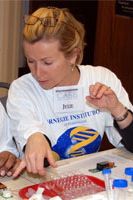 3. Dr. Julie Edmonds
3. Dr. Julie Edmonds
Co-Director, Carnegie Academy for Science Education (CASE)
Carnegie Institution of Washington
Julie Edmonds is Co-director of the Carnegie Academy for Science Education (CASE), which conducts professional development institutes for pre-kindergarten through grade 12 teachers as well as several other science programs for middle and high school students. Julie serves as the Education and Public Outreach lead for two major NASA grants to Carnegie Institution of Washington research laboratories: the MESSENGER mission to the planet Mercury and Carnegie’s NASA Astrobiology Institute team. In this connection, she has worked on nationwide educational outreach products and programs such as the design of instructional materials for teachers and instruction of teacher workshops focused on planetary science, life science, and astrobiology. She received her PhD in marine molecular genetics from James Cook University in Australia. Before joining CASE, she spent 4 years as a post-doc at the National Institutes of Health and 5 years in the biotechnology industry.
4. Dr. Kelly Gemmill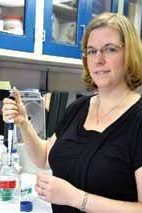
Research Biologist, US Naval Research Laboratory
Dr. Kelly Gemmill received her Ph.D. in tumor biology from Georgetown University in 2007 and is currently a research biologist at the US Naval Research Laboratory in Washington D.C. Her current research focus is in nanobiotechnology, specifically utilizing quantum dot nanoparticles in biosensors and cellular imaging applications. She has an extensive background in biochemistry, molecular and cellular biology and nanotechnology.
5. Dr. Jeff Goldstein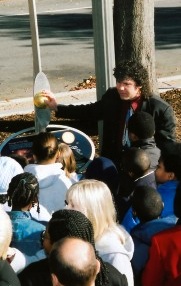
Program Director, Student Spaceflight Experiments Program (SSEP)
Center Director, Astrophysicist, National Center for Earth and Space Science Education (NCESSE)
Dr. Jeff Goldstein is the creator of SSEP, and its Program Director. He is also the Center Director for the National Center for Earth and Space Science Education (NCESSE), and the Institute Director for the Arthur C. Clarke Institute for Space Education. Jeff is a nationally recognized science educator, and planetary scientist, who has dedicated his career to the public understanding of science and the joys of learning. He oversaw the creation of the Center’s national science education initiatives, including the Voyage National Program. He led the inter-organizational team that permanently installed the Voyage model Solar System on the National Mall in Washington, DC. He is a blogger at the Huffington Post, and writes Blog on the Universe. His planetary science research includes the development of techniques for measuring global winds on other planets using large telescopes on Earth. His research has produced the first direct measurement of the global winds above the clouds on Venus, and the first measurement of the global winds on Mars.
6. Stacy Hamel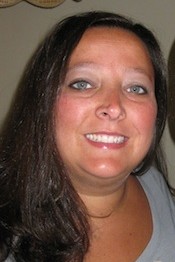
Flight Operations Manager, Student Spaceflight Experiments Program
Education Program Manager, National Center for Earth and Space Science Education (NCESSE)
Stacy Hamel is the Flight Operations Manager for the Student Spaceflight Experiments Program. Her previous experience at NCESSE includes co-directing the Voyage National Program – a national public education and outreach program that is installing replicas of the Voyage Scale Model Solar System located on the National Mall in Washington, DC, in communities worldwide. Stacy also co-directed many of the Center’s other Educational Programs including Journey through the Universe – a national initiative that engages entire communities—students, teachers, families, and the public—using education programs in the Earth and space sciences and space exploration that inspire and educate. Over 200,000 grade preK-12 students have participated in Journey through the Universe.
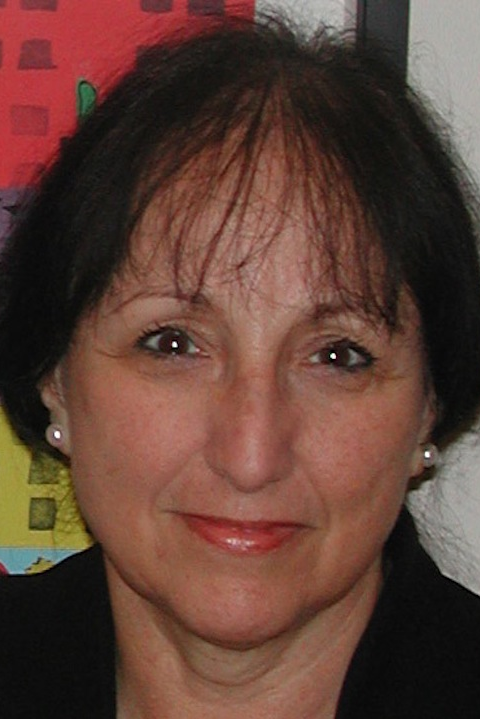 7. Dr. Toby Horn
7. Dr. Toby Horn
Co-Director, Carnegie Academy for Science Education (CASE)
Carnegie Institution of Washington
“Dr. Toby” is co-director of the Carnegie Academy for Science Education (CASE), providing professional development in STEM for pre-kindergarten through grade 12 teachers in the District of Columbia as well as programs for middle and high school students. She co-developed and taught grade 9-12 biotech courses as director of the Life Science and Biotechnology Laboratory at Thomas Jefferson High School for Science and Technology (1985-1999) and assisted DC Public Schools to start the biotechnology career pathways at McKinley Tech and Ballou Senior high schools. She earned her PhD in Biology from the University of Colorado, Boulder, and her AB in Chemistry from Bryn Mawr College. She had the great fortune to learn about the Pioneer plaque from Dr. Frank Drake while in college, attend Dr. Carl Sagan’s lecture on Mars during graduate school and discuss the projected field of Astrobiology with Dr. Gerald Soffen while at TJ.
8. Michael Hulslander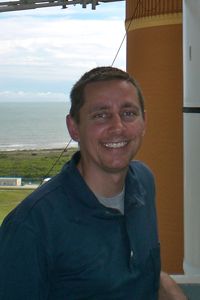
Manager of Onsite Learning
Smithsonian National Air and Space Museum
Michael is responsible for science education at the Smithsonian’s National Air and Space Museum. He also manages the How Things Fly gallery, Moving Beyond Earth gallery, the Public Observatory Project and the Explainers Program. How Things Fly teaches visitors about the science of flight. Moving Beyond Earth is an immersive exhibition placing visitors “in orbit” during the shuttle and space-station era. At the Public Observatory visitors explore craters on the Moon, spots on the Sun, the phases of Venus, and other wonders of the universe using a 16-inch telescope. The Explainers Program gives high school and college students the chance to work at the National Air and Space Museum. Michael has worked in museums and zoos for more than 25 years, researching, writing, presenting and evaluating science programs for school groups, families and the general public.
9. Dr. Tim Livengood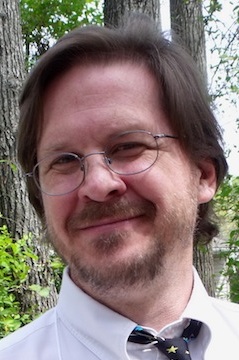
Adjunct Space Science Researcher, National Center for Earth and Space Science Education
Research Scientist, University of Maryland Department of Astronomy
Dr. Tim Livengood is a senior advisor to SSEP and adjunct research scientist with the National Center for Earth and Space Science Education. He is a research scientist with the University of Maryland Department of Astronomy and works at NASA’s Goddard Space Flight Center. Tim has been a presenter and team leader for the Center’s public and school programs and has visited hundreds of classrooms. His current research uses a neutron-detecting instrument on the Lunar Reconnaissance Orbiter to measure deposits of water on the Moon, and uses infrared spectroscopy from telescopes on Earth to measure composition, temperature, and wind velocity in the atmospheres of other planets.
10. Dr. David Loeb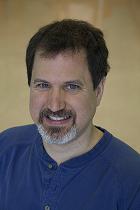
Associate Professor, Oncology and Pediatrics
Johns Hopkins University School of Medicine
Dr. David Loeb has been a pediatric oncologist since 2000. His clinical interests are diverse – he is a member of the bone marrow transplant team, and Director of the Musculoskeletal Tumor Program. In addition to clinical work, he also runs a research laboratory with several active areas of research. A core research program investigates the role of a transcription factor known as WT1 in the biology of sarcomas – tumors of connective tissue. The leading hypothesis is that WT1 regulates the expression of a broad array of pro-angiogenesis genes, and WT1 therefore promotes tumor growth through increasing the blood supply feeding cancer cells. The lab is currently designing a fluorescence-based high throughput screen for small molecule WT1 inhibitors that might be of use in treating WT1-expressing solid tumors. Another important area of research is the identification and targeting of Ewing sarcoma stem cells, with research currently focusing on a) the role of the RNA helicase DDX3 in Ewing sarcoma biology, and b) the role of the Wnt signaling pathway in regulating the growth of Ewing sarcoma and osteosarcoma.
11. Dr. Sanda F. Rajaonson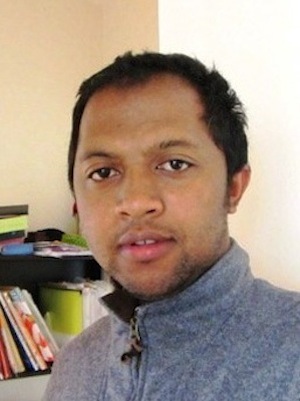
Université Libre de Bruxelles, Belgium and University of Antananarivo, Madagascar
Dr. Sanda Rajaonson received his Ph.D. in Biological Sciences from the Université Libre de Bruxelles, Belgium and the University of Antananarivo, Madagascar through a joint program between the two institutions. His doctoral thesis focused on the inhibition of virulence gene expression in Rhodococcus fascians and Pseudomonas aeruginosa, as a culmination of years of research on the virulence of pathogenic bacteria. During his career, he has developed his interest in finding alternatives to battle the problem of multi-drug resistance in pathogenic bacteria. His next step is to continue his research in the areas of microbial genetics, host-microbe interaction and cell-to-cell communication in bacteria in order to improve his understanding of the molecular mechanisms of bacterial pathogenesis.
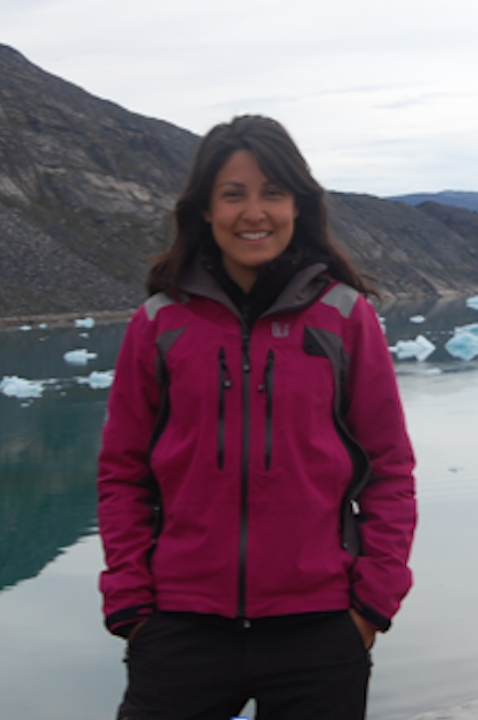 12. Dr. Hanika Rizo
12. Dr. Hanika Rizo
Postdoctoral Associate, Department of Terrestrial Magnetism, Carnegie Institution of Washington
Postdoctoral Associate, Geology Department, University of Maryland
Dr. Hanika Rizo received her Ph.D. in isotope geochemistry from the University of Blaise Pascal, France. Her areas of interest include different aspects of planetary formation and evolution. Using high-precision techniques to detect variations in tungsten isotopic compositions, she is trying to place constraints on the chemical evolution of Earth shortly following its formation. She works with the most ancient rocks preserved on the Earth’s surface, which is why she has carried out fieldwork in Southwest Greenland. She is interested in the magma ocean stage of the young Earth and the meteoritic bombardments that arrived after the core formation was completed.
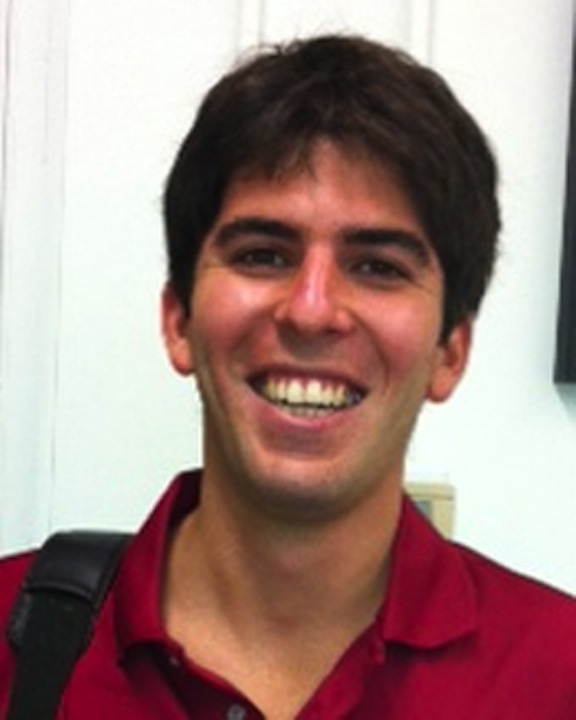 13. Dr. Timothy Rodigas
13. Dr. Timothy Rodigas
Postdoctoral Fellow, Department of Terrestrial Magnetism, Carnegie Institution of Washington
Dr. Timothy Rodigas recently received his Ph.D. in astrophysics from the University of Arizona. His primary interests lie in discovering and characterizing extrasolar planets and circumstellar disks. He has published papers on several key projects requiring skills in theoretical/numerical computations and orbital dynamics, instrumentation and high-contrast infrared detectors, and observations using > 25 foot telescopes scattered across the globe. Currently he is using the Magellan 6.5 meter telescope in Chile to image debris disks (the remnant material left over after planets form) in the hopes of detecting water ice and organic materials—the building blocks of Earth-like life—outside the solar system.
14. Dr. Alex Theos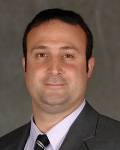
Assistant Professor, Georgetown University
Alex Theos is an Assistant Professor at the Department of Human Science in the School of Nursing And Health Studies at Georgetown University. His research interests include the biogenesis of specialized organelles, focusing on the intracellular membrane trafficking pathways. Currently, his research lab is working to understanding the cell biology of the GPNMB protein, which is associated with diverse pathologies including melanoma and pigmentary glaucoma.
15. Dr. Harri Vanhala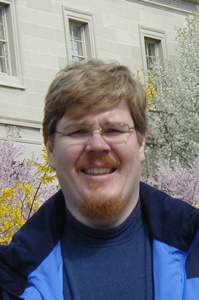
Adjunct Space Science Researcher, National Center for Earth and Space Science Education
Senior Scientist, Global Science and Technology, Inc.
Originally from Finland, Harri received his Ph.D. in astronomy from the University of Oulu. Harri has worked in various research and education organizations in the Unites States for 20 years. He is a Senior Scientist at Global Science and Technology, where he works with NASA’s Space Technology and Human Exploration and Operations Mission Directorates to help select new space technology projects for development and experiments for flight to the International Space Station. His science research focuses on the use of computer simulations to investigate the origin of the Solar System and the formation of stars and planetary systems across the Universe. His science education activities have included hundreds of visits to grade K-12 classrooms, conducting teacher training workshops, teaching college courses, and presentations to families and the public—he is one of the presenters for the Center’s Family Science Night program at the Smithsonian National Air and Space Museum.
16. Dr. Shoshana Weider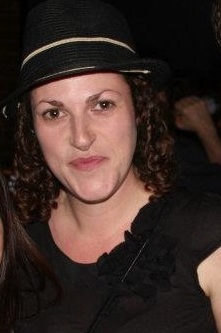
Planetary Geologist, Department of Terrestrial Magnetism
Carnegie Institution of Washington
Shoshana Weider is a planetary geologist currently working at the Department of Terrestrial Magnetism of the Carnegie Institution of Washington as a MESSENGER Postdoctoral Fellow. Following her undergraduate Earth Sciences degree at Oxford University, she completed her Ph.D. in Lunar Geology at Birkbeck College/UCL and the Rutherford Appleton Laboratory. She specialises in geochemical remote sensing techniques from planetary missions to terrestrial planets, mainly the Moon and Mercury. Shoshana also is a junior editor for Form & Content Media Ltd, where she helps run the-briefing.com, a R&D news website, and edits articles for SPIE Newsroom.
17. Dr. Steven H. Williams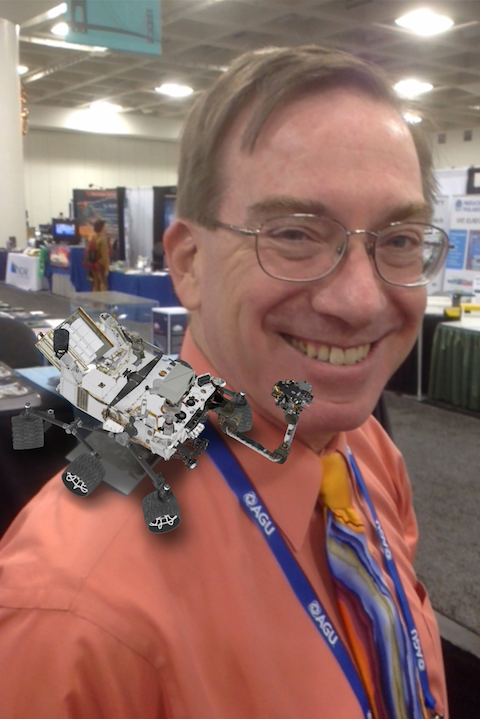
Chief of STEM Engagement
Smithsonian National Air and Space Museum
Former 5-year Chair of the Museum’s Education team, Dr. Steven Williams recently returned from a 2-year detail assignment to NASA Headquarters, where he served as Education/Public Outreach Lead for the Planetary Science Division. In that capacity, he supported a number of NASA events, including the Transit of Venus, Curiosity launch/landing, and GRAIL, LADEE, and MAVEN launches. He has produced the database driving the “SPACE 365” free app, and a variety of other subject matter pieces. He enabled NASA and NASM to collaborate on several projects, and is presently working with NASA and Maryland Public Television on an upcoming children’s show. In an earlier detail assignment to the SI Office of Policy and Analysis, Dr. Williams helped write a ‘white paper’ report on the entire education enterprise at the Smithsonian Institution. He has served on the faculty of the Space Studies Division at the University of North Dakota, and at the University of Colorado at Colorado Springs. He has served on review panels and taught on a variety of scientific topics relating to astronomy, space exploration, the nature of science, and professional skills.
